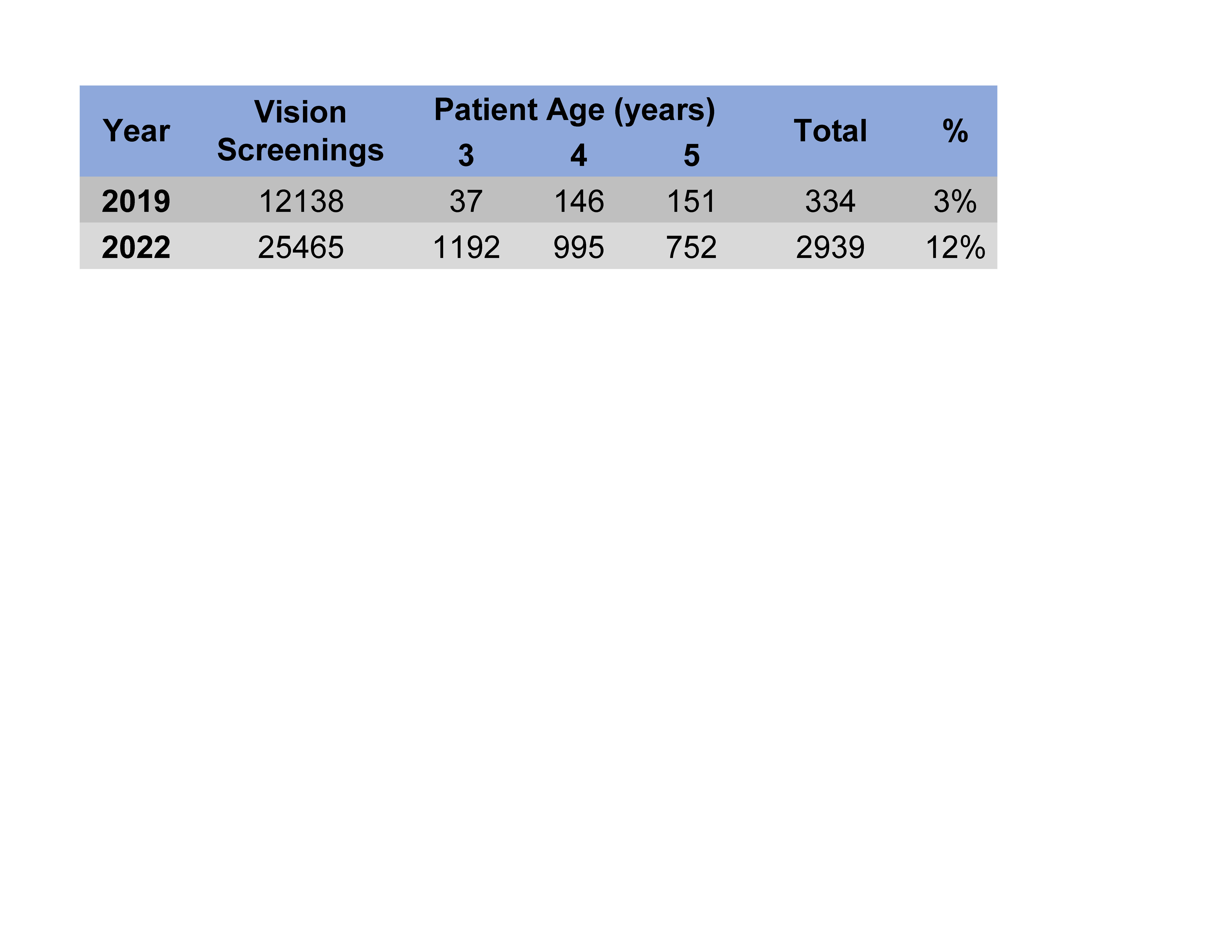General Pediatrics
Session: General Pediatrics 1
230 - Implementation of Instrument-Based Vision Screening at 3-5 year Well-Child-Checks Within a Children's Hospital System: Impact on Rates of Completion and Referrals
Friday, May 3, 2024
5:15 PM - 7:15 PM ET
Poster Number: 230
Publication Number: 230.588
Publication Number: 230.588
- EH
E Eugenie Hartmann, PhD (she/her/hers)
Senior Research Scientist
Akron Children's Hospital
Akron, Ohio, United States
Presenting Author(s)
Background: Vision screening is a crucial component of each well-child-check (WCC) according to the Bright Futures Periodicity Schedule. The purpose of these frequent screenings is to detect sight-threatening disorders that may impact a child’s early development and, unless treated, may lead to life-long visual impairment affecting the individual’s quality of life educationally, emotionally and socially.
Beginning at the 3-year WCC and continuing annually through age 6, visual function is to be assessed using monocular visual acuity testing. However, reliable assessments of monocular visual acuity in preschool-aged children, while critical in identifying visual disorders, are notoriously challenging in the primary care setting.
Since the mid-1990s camera-like instruments (photo screeners) have been used, often in lieu of monocular acuity testing, to estimate how accurately light is focused on the retina. Photo screeners do not measure visual acuity; they quantify the blurriness or clarity of an image by estimating the refractive correction required to yield optimal focus of light on the retina. This information can indicate when a referral to an eye care provider is warranted.
Objective: The purpose of this project was to compare rates of completed vision screenings for children during 3-, 4- and 5-year WCCs across a Children’s Hospital System for two 12-month periods. During 2019, vision screening was completed using monocular visual acuity testing. During 2022, vision screening was completed using an instrument.
Design/Methods: Beginning in April 2021, we systematically implemented instrument-based vision screening for 3-5-year WCCs in general pediatric offices. We compared the rate of vision screenings during WCCs from 2019 and 2022 for the 28 offices that were within our system both years.
Results: We determined the rate of vision screenings for ages 3-5-year-olds at WCCs. We considered children who received care in our Vision Center during the past 11 months as not requiring screening at these WCCs and tallied them separately. The average rate of vision screening across all three ages, including those children already being followed, was 45% in 2019 and 90% in 2022. Rates by age are shown in Tables 1 and 2. We also assessed the rate of referrals from vision screening by age across these two years (Table 3).
Conclusion(s): The rate of completed vision screenings as well as referrals to ophthalmology increased in 2022 when instrument-based vision screening was used compared to traditional monocular visual acuity screenings in 2019. This increase was especially notable in the 3- year-old age group.
.jpg)
.jpg)

